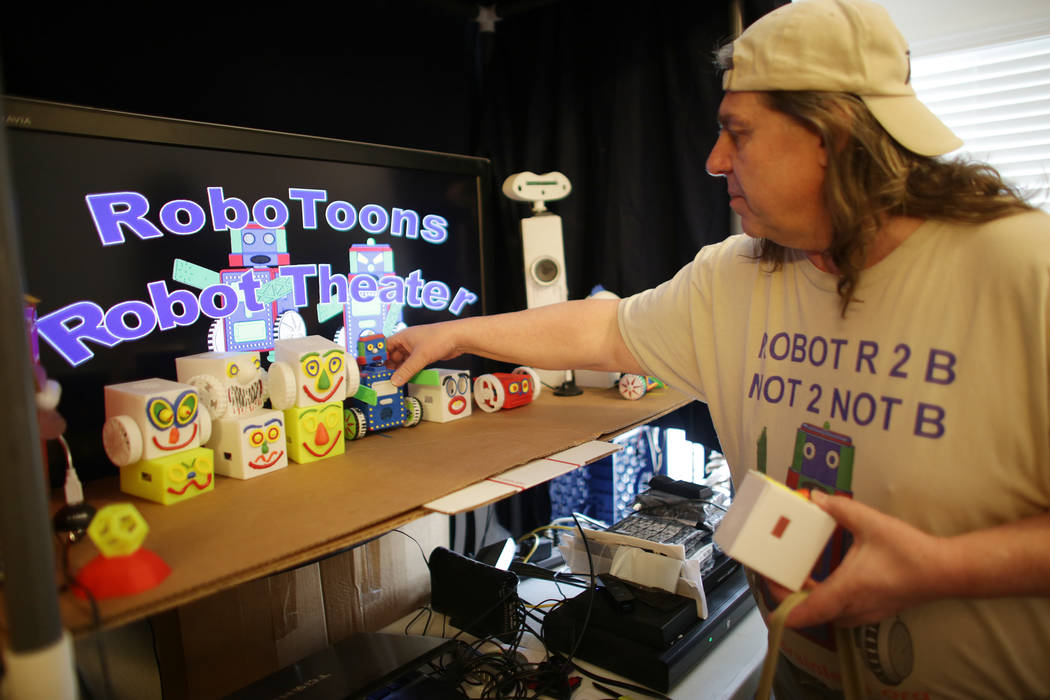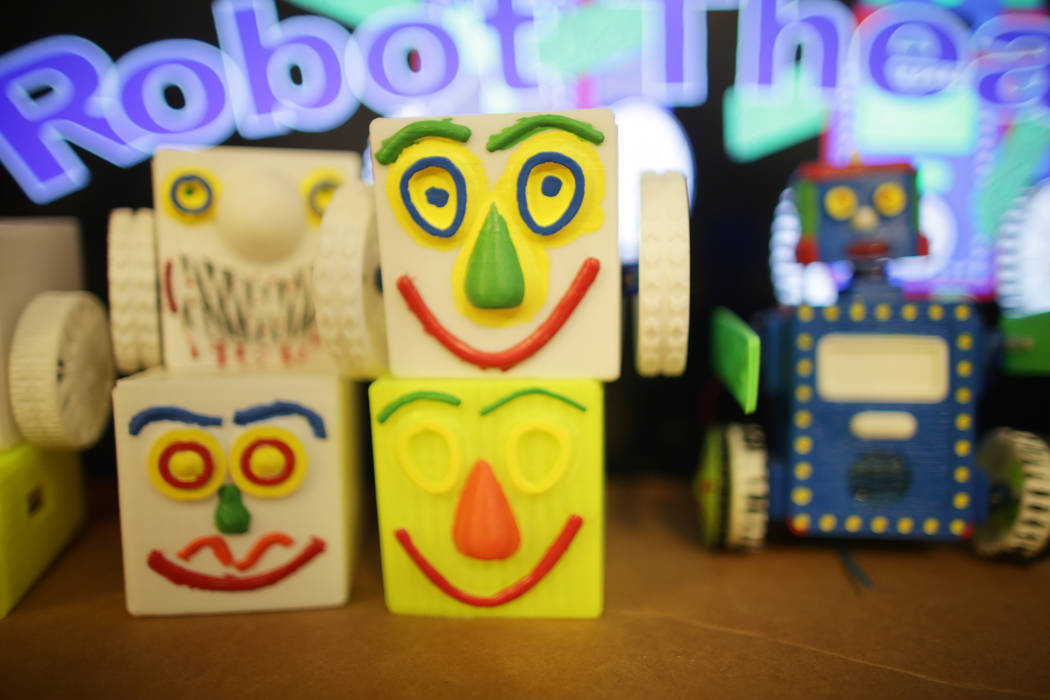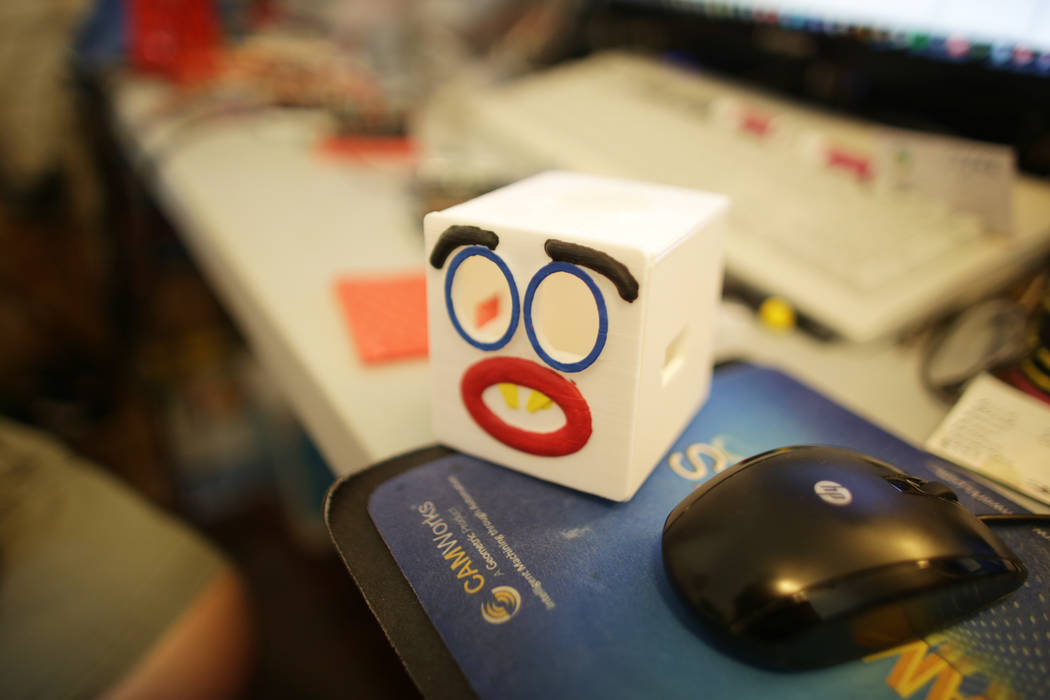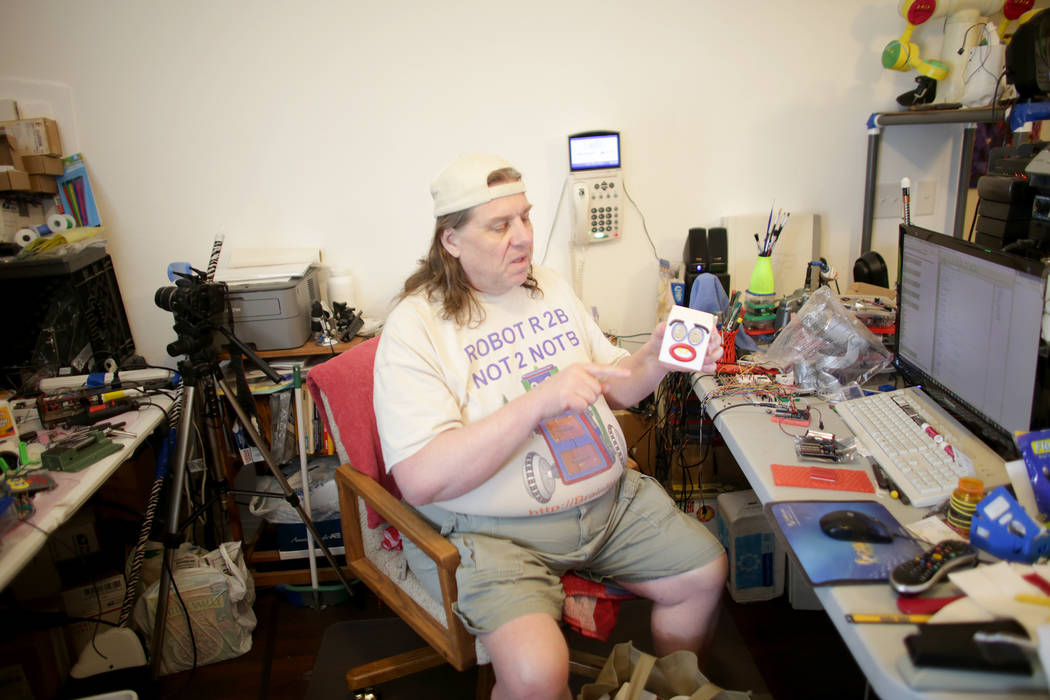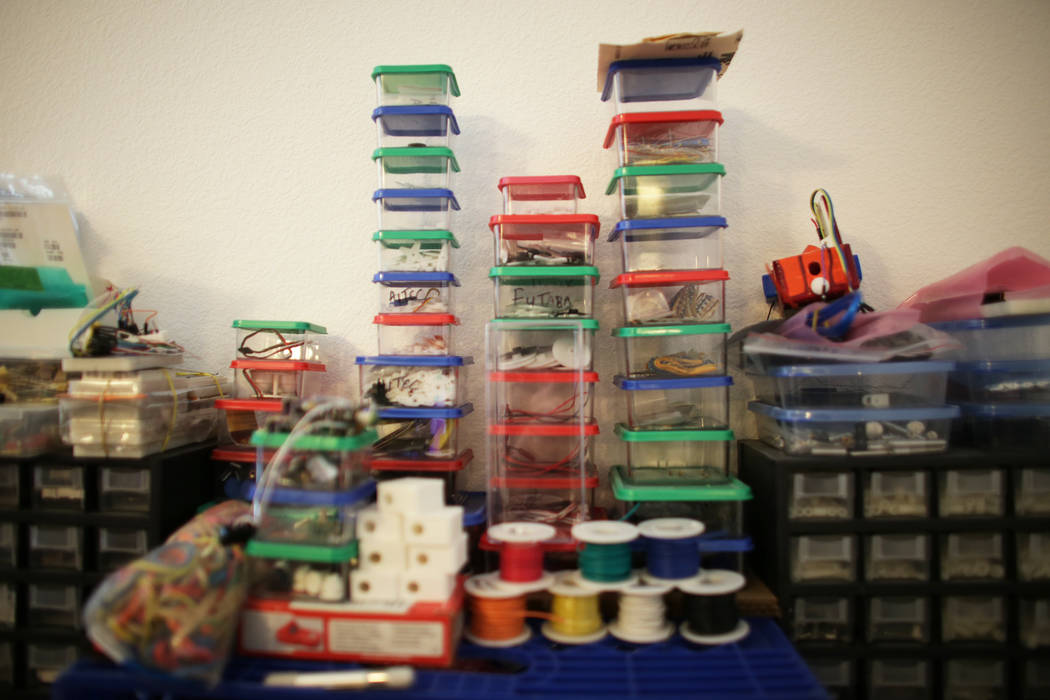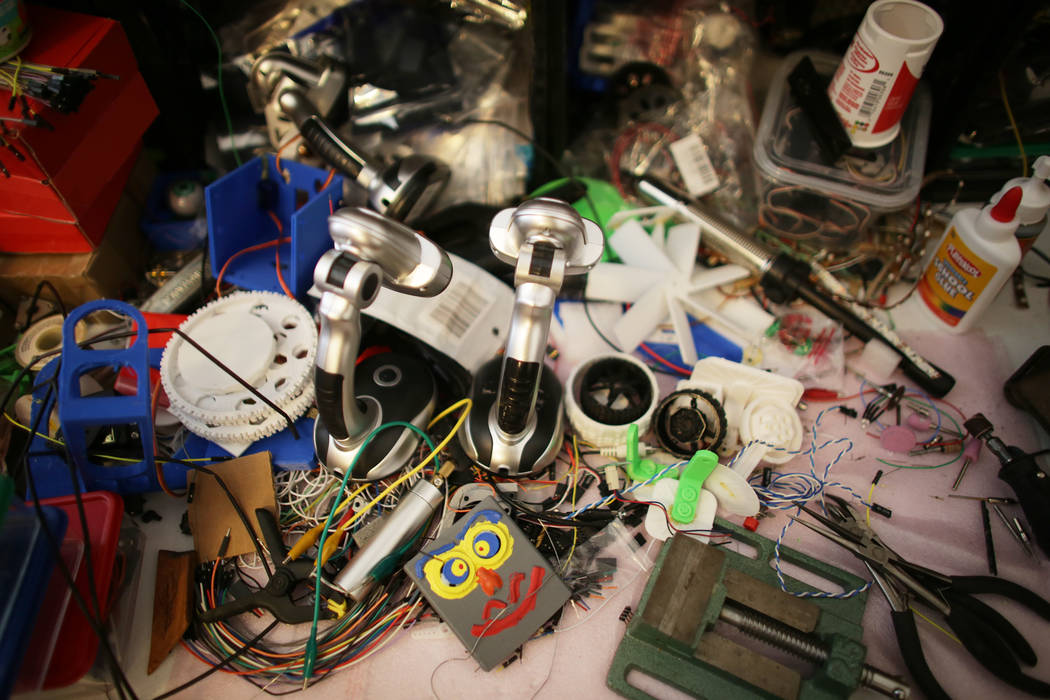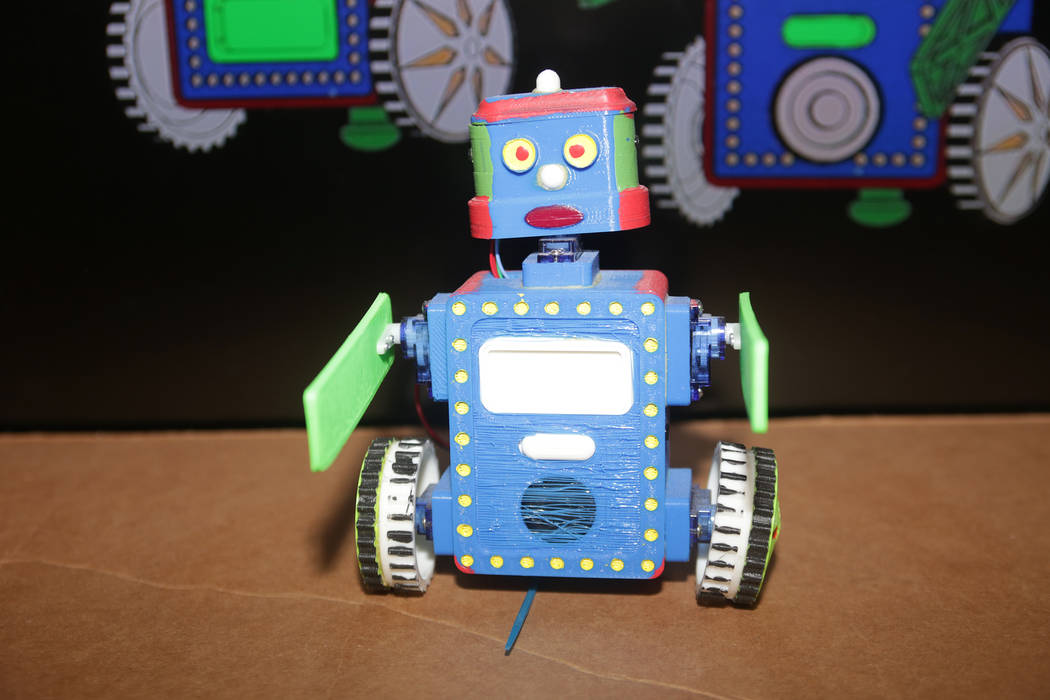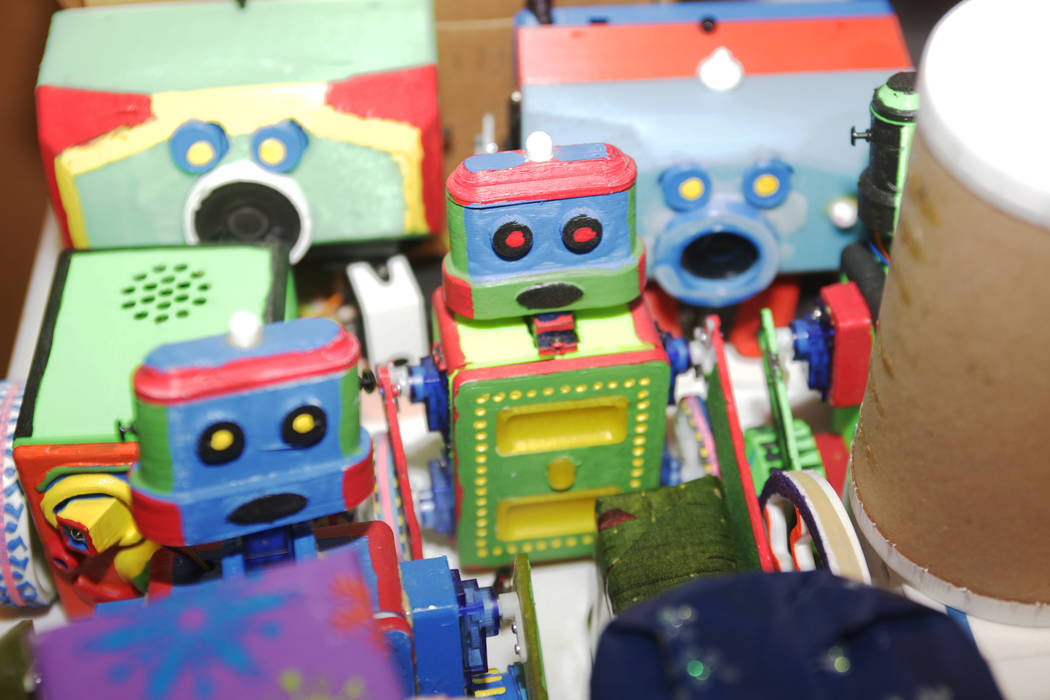North Las Vegas man develops program to teach people how to make robots
Those who know Walt Perko agree that he is unconventional.
As one enters his apartment in a senior community, a robotic skull atop a refrigerator lights up. At least 30 robots of several shapes and sizes are lined up on the cabinets. Robot pieces also sit on two of his computer desks, near his pet parrot Leonard’s living space and in front of a television screen with a screensaver that reads, “RoboToons Robot Theatre.” Perko calls his home a L’Robotorium.
But the 66-year-old, who wears a cap backward to cover his long hair, a T-shirt he designed himself and cargo shorts, doesn’t look like a mad scientist. He brightens up when asked about anything tech-related, especially robots.
“He’s unusual in the most delightful way,” said his friend of more than 40 years, Yvonne Huffman of Minneapolis. “He truly is on the brink of genius, especially with computers and stuff.”
Perko said he spends 10 to 15 hours a day designing robots and writing tunes — using a synthesizer or computer program — to accompany the hundreds of YouTube videos he has created for the bots. He has created a STEAM (Science, Technology, Engineering, Arts and Mathematics) education program called RoboGuts that teaches people how to make circuits and program them. From there, they can learn how to make robot toys and animatronics, he said. Perko said it’s a STEAM program because there is a creative aspect, including painting, when it comes to designing robots.
Perko has uploaded at least two dozen free lessons to his website.
“It’s so simple that little kids can do this,” Perko said. “They don’t even need to know how to read or write, just look at the photos.
“Instead of giving them pencils and color pens, give them a 3D CAD modeling program,” he said. “Drawing on the program is so easy. Kids can learn how to make their own toys.”
Learning at a young age can assist children with getting high-paying jobs when they are older, Perko said.
He taught a two-week class for beginning robotics at Boys & Girls Clubs of Oceanside, California, about six years ago. He also has taught the program to children of friends, he said.
Friend Jonathan Pynchon of Gilroy, California, said Perko loves to share knowledge, “and the internet gave him access to everything he needed to become proficient in design and programming robotic platforms. He realized there were some opportunities in the way the marketplace was ignoring simple but necessary aspects of entry-level design.”
Perko’s younger sister Carole, of Minneapolis, said Perko has been interested in electronics since he was about 12, and although the technology was not as accessible as it is now, he researched a lot.
“He built his own PC (while he was in college), before there was such a thing on the market,” she said. “Walter was always one to keep up with the newest trends in anything electronic, and now, of course, digital. He was usually ahead of his time building things that were still a number of years away from being sold to the public.”
Perko studied computers while attending the University of Minnesota and later worked for several computer-related companies.
He said he served in the Navy in 1968 to 1972, worked for a photography company as a pilot and was contracted by the NASA Ames Research Center in Mountain View, California, for a project known as LM-95. There, a man who worked in the machine fabrications shop created a plate for Perko to use to build robots.
It wasn’t until 2004, when Perko was living in Tucson, Arizona, that he created his first robot. He calls it the BOE-Bot and has made several since, with more than 10 designs.
He said he perfected the design of his circuit board nearly two years ago. The tiny board, which he calls RoboGuts because the wiring resembles intestines, has a synth chip socket and an audio amplifier built in; that allows users to create speech and song in their programs for the robotic toys. His latest design is known as the BillyBot.
Tom Atwood of Wesley Chapel, Florida, was the editor of Robot Magazine for seven years. He met Perko during that time.
“He has a mind that is mathematical, but he’s a natural for that. He also has a soft place in his heart,” Atwood said. “He’s got this philosophy that if you teach a child how to build an intelligent machine, that child will be set to continue building intelligent machines for life.”
Perko said he thinks his program can replace STEM programs created by Legos and Vex, which tend to be more expensive, in schools. He said people can spend up to $500 on Legos, whereas he can build robots with more capabilities for about $50.
Perko said he hopes to start teaching a RoboGuts course at North Las Vegas community centers by fall. The class would be free; students would buy the materials they would take home.
It costs about $100 for Perko to design a circuit board on his own; he recently began working with a factory capable of producing larger numbers of the boards. It costs about $3,200 for a half batch of about 500 circuit boards, Perko said.
He has enrolled in a Tech Briefs design contest called Create the Future, through which he hopes to win money to fund the planned RoboGuts class. Perko also started a Go Fund Me web page to raise money.
Perko said he hopes to eventually expand the program by opening multiple L’Robotorium shops, where seniors or college students can learn how to design robots, then mentor children in after-school programs. He also wants children to get invovled with creating RoboToons videos by writing scripts and producing.
“My classes focus on programming, and they are learning the real programming that controls the full thing,” Perko said.
Contact Kailyn Brown at kbrown@viewnews.com or 702-387-5233. Follow @kailynhype on Twitter.
Online
RoboGuts program: r2pv1.com
L'Robotorium Shop: lrobotorium.com
RoboToons: brainless.org



